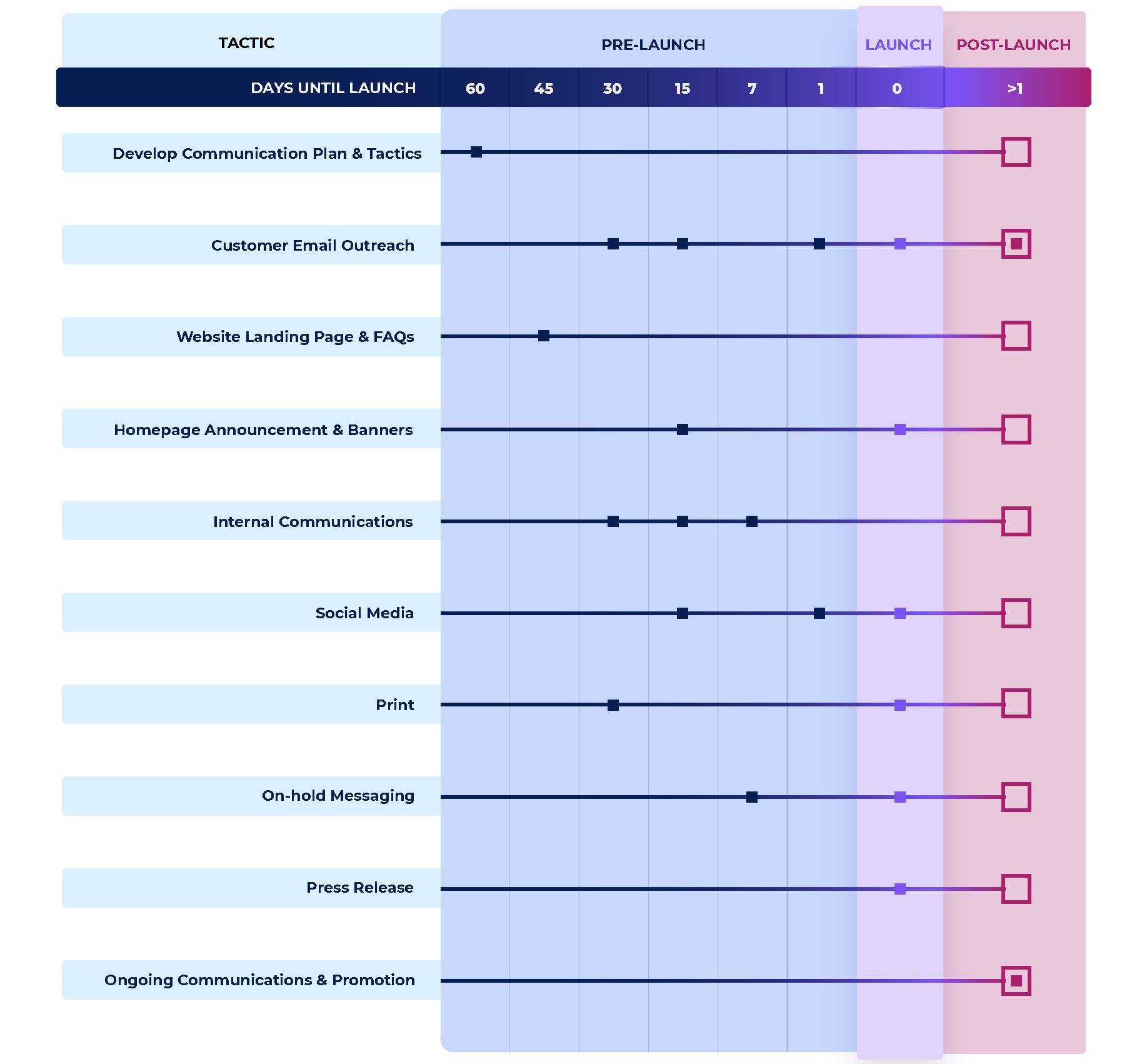Change Management Marketing Best Practices
By Sarah Bounaim, Senior Customer Adoption Specialist, CAST
March features one of the most notable changes within the calendar year: our move from winter to spring. While you’ve likely been anticipating this change for some time (especially if you live in the northeast), Mother Nature sends some advanced signals in the form of warmer weather and longer days.
This changing of the seasons gives us the perfect opportunity to discuss the essentials of change management and strategies billers can take to ensure the immediate success of any major addition or transition regarding the bill payment experience.
Billing & Payment Change Management Use Cases
Transitions within the world of billing and payment are no different than any other aspect of your business. Consider a water department adding smart meters to customers’ homes. In many cases, organizations will send communications with clear messaging around the change taking place, why it is happening, what customers can expect and the process needed to make the switch.
For organizations updating their billing and payment solution, the simple rule of marketing is that if it impacts customers, it’s worth talking about. Here are a few changes that demand marketing and communications:
- Transitioning from a legacy platform to the Paymentus billing and payment solution
- Introduction of a new payment channel (paperless eBilling, chatbot, Pay-by-Text)
- Introduction of a new payment method (digital wallets such as PayPal, PayPal Credit, Venmo, Apple Pay, Google Pay and Amazon Pay)
- Introduction of a new payment capability (Walmart Bill Pay (WMPB) or cash payments at CVS and Walgreens)
- Change in fee model (from absorbed to convenience fee)
Change Management Fundamentals
Regardless of the business reason, the need for clear, concise and timely communications is essential. The Paymentus Client Adoption Success Team (CAST) suggests billers prioritize the following three items when drafting these communications:
- The customer benefits to be gained from this change
- The process, expectations or necessary actions related to customers (e.g., Customers must enroll…)
- The date the change is scheduled to take place or be implemented
Another key aspect of successful change management is prioritizing education for both internal and external audiences. Your employees will be the main resources customers turn to for answers on the ins and outs of any particular change. The larger the change, the more education is necessary.
Organizations should hold training sessions for all impacted internal stakeholders including customer service and customer-facing teams, finance teams, marketing, etc. The development of training materials should be table stakes and will give these teams everything they need to become experts on the new offerings.
Perform an Asset Audit
Paymentus suggests clients review all customer-facing materials to ensure consistency and accuracy in regards to the upcoming change. The following is a high-level checklist of existing materials that may warrant an update:
- Web
- All landing pages
- Bill pay/Customer Portal page
- Bill pay FAQ page
- All customer service pages
- Printed Materials
- Billing statements
- Direct mail
- Bill inserts
- Brochures
- Lobby Signage
- Interactive Voice Response (IVR) scripts
- Internal phone routing and call center solutions
- Customer service representative scripts
- Customer emails and notifications
One additional aspect to consider is that if you work with a bill print vendor, you must finalize language updates to accommodate their printing deadline.
Change Management Communications Timeline
The following is a 45-day marketing communications plan designed to highlight the key milestones and actions needed to best communicate your upcoming change with both internal and external audiences:

Ongoing Communications
The last piece of this puzzle is a well-planned marketing campaign that continues beyond the launch date. While the previously supplied timeline and checklist may provide customers with a wealth of information prior to launch, helpful reminders and additional notices will drive optimal results. Learning about AutoPay in advance may pique customer interest, but it’s unlikely they’ll write down the date it becomes available. A post-launch reminder will provide the reinforcement that increases adoption.
Post-launch communications are also important given that customers will now be encountering these changes for the first time. While the Paymentus billing and payment solution is designed to maximize self-service, customers may want reassurance that they’re using or experiencing the new features properly. Further communications providing either relevant details or contact information help to deliver a better customer experience.
Looking for strategic marketing support at no cost to you? The Paymentus Client Adoption Success Team (CAST) has helped countless Paymentus clients achieve their digital payment adoption goals through customized marketing campaigns. For more information on how CAST can help your organization, visit paymentus.com/client-adoption-success-team .
